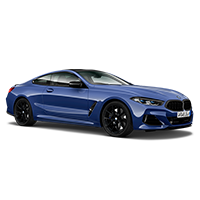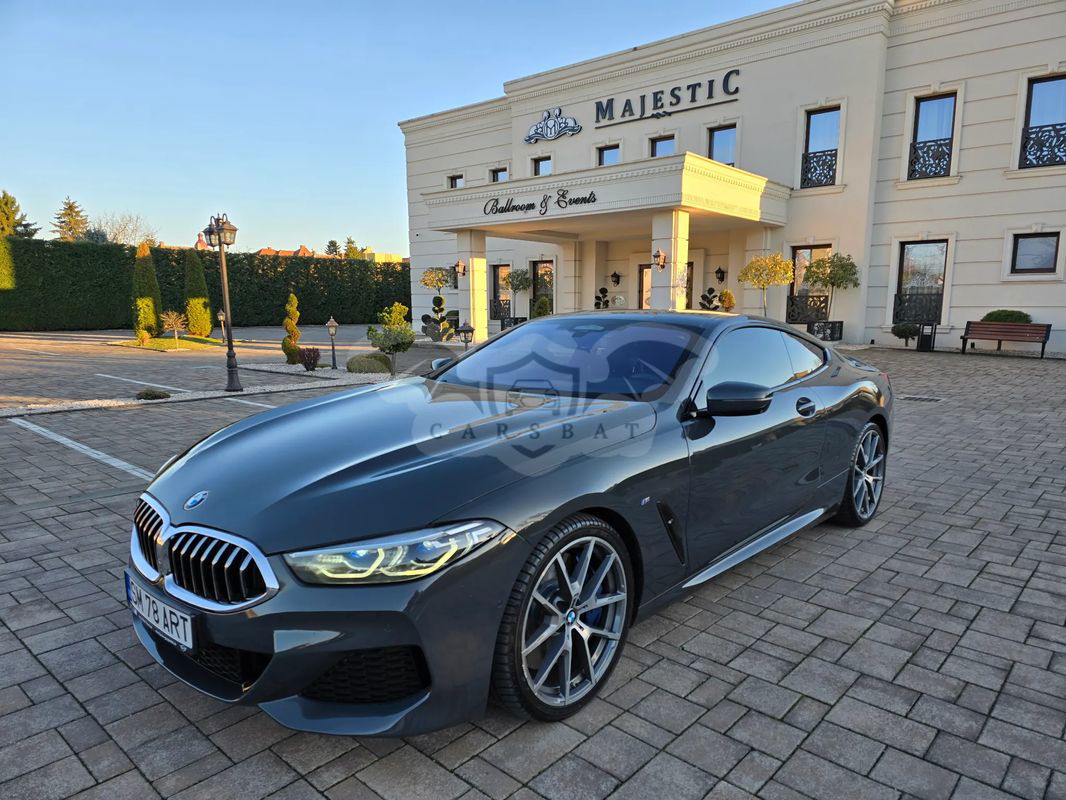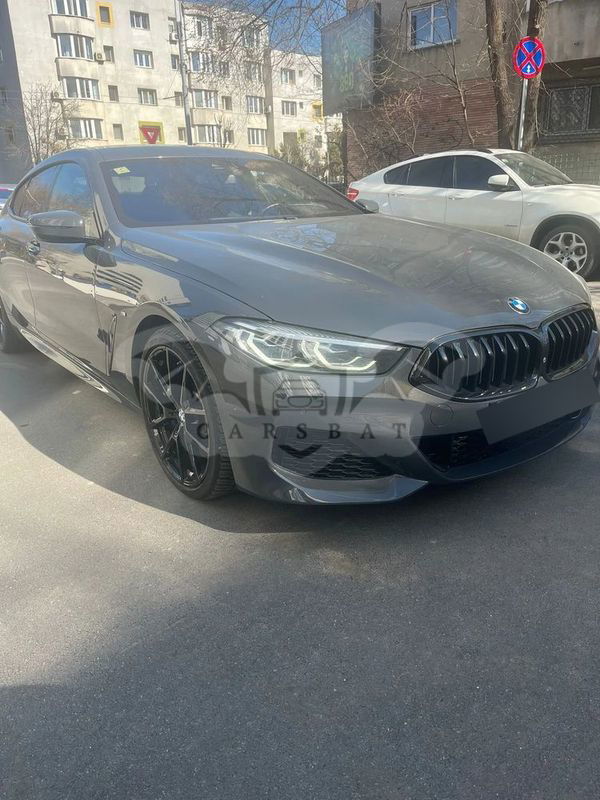At CarsBat.com, you can get pricing for 21 new and used BMW 8 Series in a variety of
configurations and years. We provide price information for this popular car in countries such as:
Belgium, United Kingdom, Germany, Denmark, Italy, Luxembourg, Netherlands, Poland, United States, France, Czech, Sweden.
Our database contains current prices for BMW 8 Series, which vary depending on mileage,
condition and equipment of the car. You will be able to compare the price of different versions of BMW 8 Series
and choose the best option that fits your budget and preferences.


![BMW 8 Series G14/G15/G16 [2018 - Prezent] 840d xDrive 2018 BMW 8 Series G14/G15/G16 [2018 - Prezent] 840d xDrive 2018](https://cdn-img.carsbat.com/autovt/7053176009/7053176009.jpg)
![BMW 8 Series G14/G15/G16 [2018 - Prezent] 840i xDrive 2023 BMW 8 Series G14/G15/G16 [2018 - Prezent] 840i xDrive 2023](https://cdn-img.carsbat.com/autovt/7056249378/0_wbadz41070cn99181_4sow.jpg)

![BMW 8 Series G14/G15/G16 [2018 - Prezent] 840d xDrive 2019 BMW 8 Series G14/G15/G16 [2018 - Prezent] 840d xDrive 2019](https://cdn-img.carsbat.com/autovt/7056869917/0_wbabc21070bt80837_adfv.jpg)
![BMW 8 Series G14/G15/G16 [2018 - Prezent] 840d xDrive AT MHEV 2021 BMW 8 Series G14/G15/G16 [2018 - Prezent] 840d xDrive AT MHEV 2021](https://cdn-img.carsbat.com/autovt/7054631794/0_wbabc61050cg66304_htvn.jpg)
![BMW 8 Series G14/G15/G16 [2018 - Prezent] 840d xDrive AT MHEV 2022 BMW 8 Series G14/G15/G16 [2018 - Prezent] 840d xDrive AT MHEV 2022](https://cdn-img.carsbat.com/autovt/7053704292/7053704292.jpg)
![BMW 8 Series G14/G15/G16 [2018 - Prezent] 840i xDrive AT 2023 BMW 8 Series G14/G15/G16 [2018 - Prezent] 840i xDrive AT 2023](https://cdn-img.carsbat.com/autovt/7053717936/7053717936.jpg)

![BMW 8 Series G14/G15/G16 [2018 - Prezent] 840d xDrive Gran Coupe 2021 BMW 8 Series G14/G15/G16 [2018 - Prezent] 840d xDrive Gran Coupe 2021](https://cdn-img.carsbat.com/autovt/7056259446/7056259446.jpg)
![BMW 8 Series G14/G15/G16 [2018 - Prezent] 840i Gran Coupe 2019 BMW 8 Series G14/G15/G16 [2018 - Prezent] 840i Gran Coupe 2019](https://cdn-img.carsbat.com/autovt/7055372549/7055372549.jpg)
![BMW 8 Series G14/G15/G16 [2018 - Prezent] 840d xDrive 2018 BMW 8 Series G14/G15/G16 [2018 - Prezent] 840d xDrive 2018](https://cdn-img.carsbat.com/autovt/7053155724/0_wbabc21050bt80271_ypc6.jpg)
![BMW 8 Series G14/G15/G16 [2018 - Prezent] 840i Gran Coupe xDrive 2020 BMW 8 Series G14/G15/G16 [2018 - Prezent] 840i Gran Coupe xDrive 2020](https://cdn-img.carsbat.com/autovt/7053917252/0_wbagv41080bp45828_dxdl.jpg)
![BMW 8 Series G14/G15/G16 [2018 - Prezent] 840d xDrive AT MHEV 2024 BMW 8 Series G14/G15/G16 [2018 - Prezent] 840d xDrive AT MHEV 2024](https://cdn-img.carsbat.com/autovt/7056480899/7056480899.jpg)
![BMW 8 Series G14/G15/G16 [2018 - Prezent] 840i xDrive AT 2021 BMW 8 Series G14/G15/G16 [2018 - Prezent] 840i xDrive AT 2021](https://cdn-img.carsbat.com/autovt/7055994388/7055994388.jpg)
![BMW 8 Series G14/G15/G16 [2018 - Prezent] 2021 BMW 8 Series G14/G15/G16 [2018 - Prezent] 2021](https://cdn-img.carsbat.com/autovt/7056437147/0_wbagw01090cg92379_dtr9.jpg)
![BMW 8 Series G14/G15/G16 [2018 - Prezent] 840d xDrive AT MHEV 2019 BMW 8 Series G14/G15/G16 [2018 - Prezent] 840d xDrive AT MHEV 2019](https://cdn-img.carsbat.com/autovt/7056200509/7056200509.jpg)
![BMW 8 Series G14/G15/G16 [2018 - Prezent] 840d xDrive 2020 BMW 8 Series G14/G15/G16 [2018 - Prezent] 840d xDrive 2020](https://cdn-img.carsbat.com/autovt/7056442045/0_wbabc21040cf50214_ipxz.jpg)
![BMW 8 Series G14/G15/G16 [2018 - Prezent] 840i xDrive 2020 BMW 8 Series G14/G15/G16 [2018 - Prezent] 840i xDrive 2020](https://cdn-img.carsbat.com/autovt/7054751215/0_wbagv41020ce84662_a38d.jpg)
![BMW 8 Series G14/G15/G16 [2018 - Prezent] 840d xDrive Gran Coupe 2020 BMW 8 Series G14/G15/G16 [2018 - Prezent] 840d xDrive Gran Coupe 2020](https://cdn-img.carsbat.com/autovt/7055874353/7055874353.jpg)
![BMW 8 Series G14/G15/G16 [2018 - Prezent] 840i xDrive 2019 BMW 8 Series G14/G15/G16 [2018 - Prezent] 840i xDrive 2019](https://cdn-img.carsbat.com/autovt/7054904532/7054904532.jpg)
![BMW 8 Series G14/G15/G16 [2018 - Prezent] 840d xDrive Cabrio 2019 BMW 8 Series G14/G15/G16 [2018 - Prezent] 840d xDrive Cabrio 2019](https://cdn-img.carsbat.com/autovt/7055656478/0_wbafy21000bx46947_xkau.jpg)